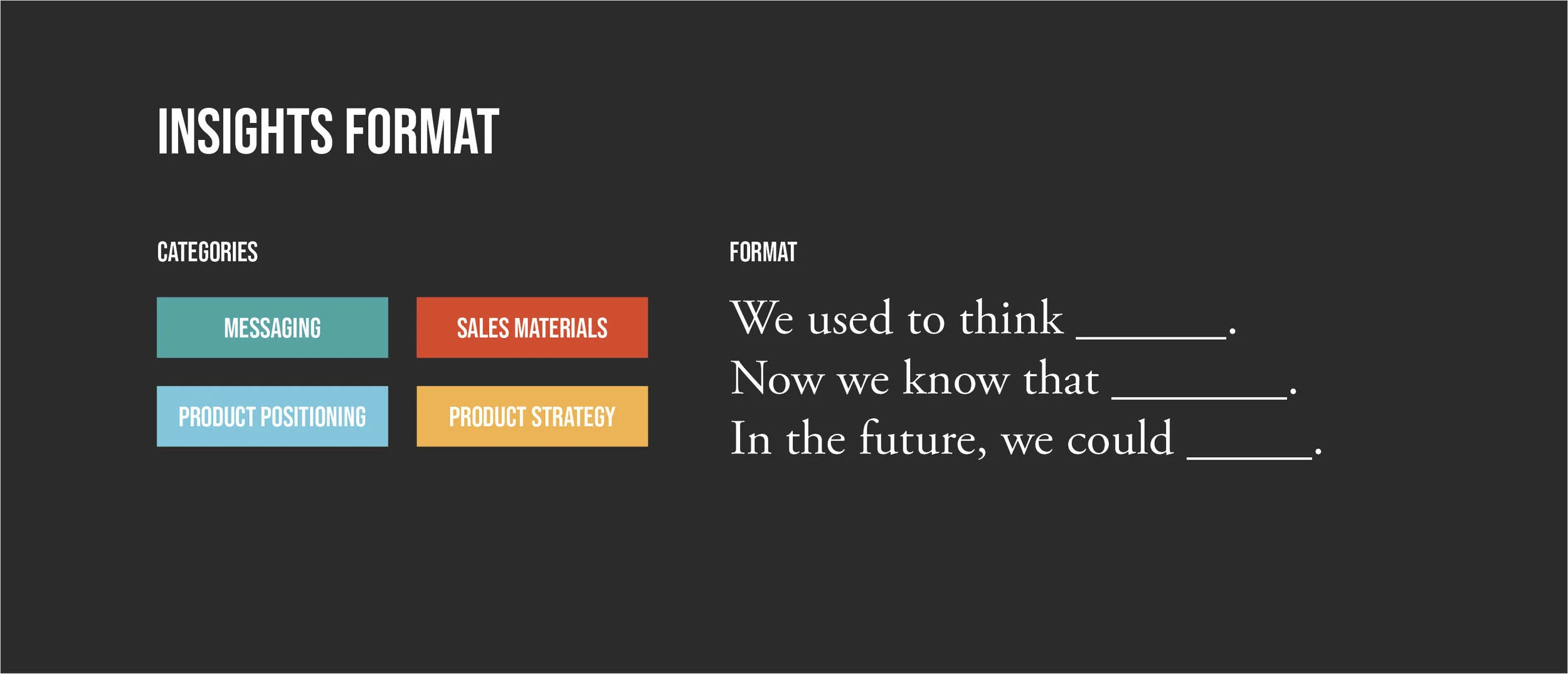In late 2017 I joined Formation, the AI-powered marketing platform that enables personalization for Starbucks and United Airlines. Formation hired me to study and represent the perspectives of internal and external stakeholders. Above all, I view myself as the customer advocate, leading the creation of user experiences that build sustainable customer benefit while achieving the enterprise objectives of our clients.
Duration:
12.2017 - 08.2019
Role:
Strategic Design Lead
My contribution:
Research design and execution, positioning and messaging, customer advocacy, evangelism
*All work shown has been sanitized or released publicly by Formation
projects
Responsibilities
Bridged perspectives across Product, Design, Engineering, Data Science and Business Development teams to synthesize cross-functional expertise into institutional knowledge, product positioning and sales and marketing materials
Transformed complex technological concepts into elegant narratives suitable for C-suite executives, technical teams, and company-wide communication
Designed and managed research programs that increased industry and stakeholder understanding in the nascent Personalization Marketing Technology space
Held key speaking roles in frequent C-level conversations, identifying strategic opportunity and bringing digital transformation possibilities to life for 5 verticals
awards
Awarded the RSPCT award in September of 2018, one of 5 bi-annual, company-wide performance awards
what i did well
Unified the disparate and often conflicting opinions of company teams into simple and cohesive narratives
Provided a strong and important counter-balance to our highly technical and business-focused organization as a client-facing user advocate
Collaborated with a BD peer to define and create the company’s sales toolkit
Nurtured strong and effective relationships with co-workers on every team and at every level, consistently contributing a positivity and cheerfulness that has been greatly appreciated by my peers
where I fell short
My first startup experience has proven to be a fantastic learning opportunity, though difficult and painful at times. In retrospect, my greatest misstep was underestimating the structures of influence, as well as the time and sensitivity needed to establish credibility amongst company stakeholders.
Though I proved to be a valuable contributor, my lack of enterprise SaaS experience hindered my impact considerably. The company as a whole was short on domain expertise, so mentorship and guidance was unavailable to get me up to speed. Though difficult to assess, as I found many ways to contribute to multiple teams, I question if I was the optimal hire for the role.
As the only creative working with the Business Development and Sales teams, the creative integrity of my work at times gave way to the pressures of business focus and culture. Though the teams probably preferred to preserve this mind-frame, I now see that by doing so I marginalized my expertise, limited my contribution, and withheld a perspective that would have resulted in significantly stronger output.
BRAND Positioning
January, 2018
One of the first tasks I was given upon joining was rethinking the company’s vision and mission statement. The company had cycled through many possibilities, and when I joined the vision statement was “To empower the world’s leading enterprises to build deeper relationships with their customers as individuals”.
stakeholder strategy
May 2018
Heading into 2018 the product and sales teams expressed the desire to deepen our understanding of our product stakeholders. Two work streams were scoped, one which investigated the perspectives of executive buyers to increase sales relevance, and another which examined current operator workflows to inform considerate product development.
I led the first work stream, which defined our methodology and best practices regarding recruiting, documentation, and synthesis. I then helped to oversee the second work stream, which was executed by a junior member of the team using the processes and approach.
What went well
As a stickler for process, I insisted on rigorous and consistent documentation from all participating team members. We were careful to stay organized from the very beginning, ensuring documentation and synthesis occurred immediately after each interview. This helped us quickly create a formalized process that was utilized in numerous other research initiatives.
Insights from the Executive Buyer research directly shaped our sales materials and messaging, and the Operator Research successfully informed the product team of unaddressed user need. I was awarded a Formation RSPCT award- one of 5 bi-annual, company-wide performance awards- for the initiative later that fall.
what went poorly
I made the grave mistake of not clearly prioritizing stakeholders during the Executive Buyer Research. As a result priorities and directives became muddled as we began to generate and socialize output.
I underestimated the sensitivity of the subject matter, and as findings began to challenge core business strategy and previous product decisions, support for and impact of the initiative suffered.
Problem Statement Narrative
January 2019
One of the greatest challenges of working with emerging technology is making complex ideas simple. As our company grew, so did the need to provide clear and consistent education around the problem we were solving and what we were building. I was asked to distill the problem statement into a narrative that communicate our value proposition to all new hires.
I began by asking key company stakeholders to explain the value proposition the way they would to prospective hires. I whiteboarded the highs and lows of the journey with the leaders of our Business Development and Product Teams, and turned the journey into a simple story appropriate for a broad audience.
Use Cases
One of my primary functions at Formation is to illustrate the strategic opportunities of our product for prospective clients.
This vision work requires deep knowledge of the target industry as well as the abilities and limitations of our technology. I conducted desk research and in-depth expert interviews to gain insight on the target vertical, and worked closely with our Product team to ensure the use cases we were developing played nicely with our product strategy.








































